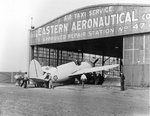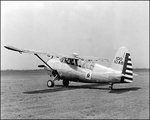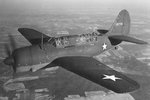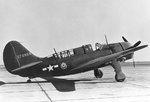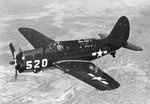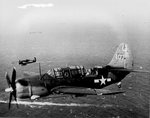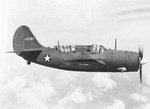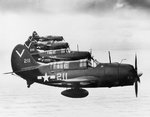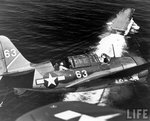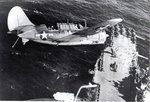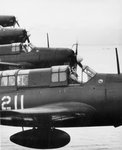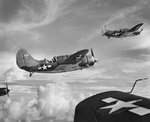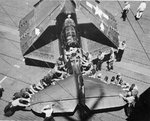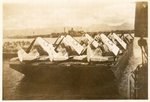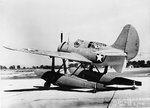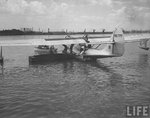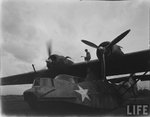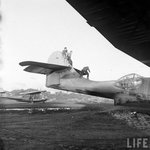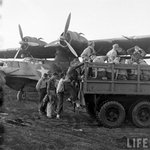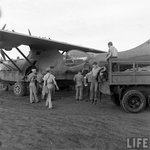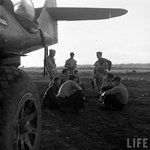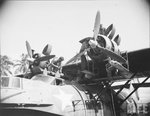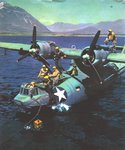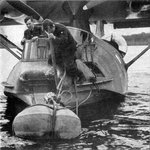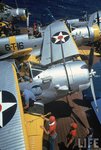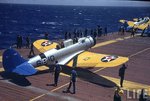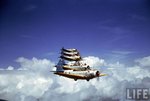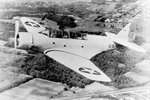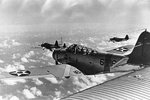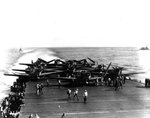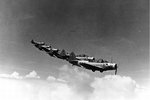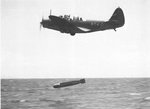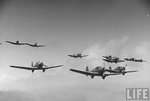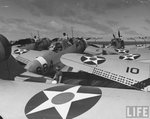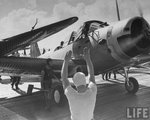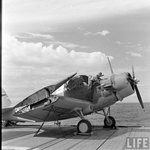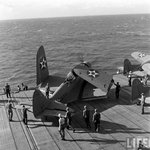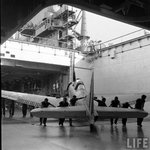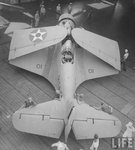Brewster SB2A Buccaneer
The Buccaneer is a prime example of how a design that looked good on paper in 1939 can be woefully lacking by 1941. Between the drawing board and the production line, the SB2A put on substantial additional weight that overwhelmed her 1,700 horse power engine and out dated air frame, resulting in a ship that proved to be, slow, sluggish, and with unpleasant handling qwerks. Though many other stats appear comparable to the Grumman TBF on paper, her inferior wing area, bomb load, and real world performance put her way behind the Avenger. The initial delivery of SB-2A- 2s 3s were quickly relegated to training duties. 162 non folding wing Buccaneers ordered by the Dutch were taken over by the Navy, christened the "SB2A-4," and used by the Marines as trainers for the first two years of the War. (That is the version featured in this film. Perhaps the high point of the Buccaneers service for the Navy was there use in the Marines first Night Fighter squadron, VMF(N) 5-31.
The British ordered the SB2A under Lend Lease as the "Bermuda," and quickly came to the same conclusion about her as the Americans, Most were quickly relegated to such duties as target tug towing, although there is a report that they were used with some success as a level bomber in the plane starved India-Burma campaign.
Source: See Brewster SB2A Buccaneer Training Film Live Online
The Buccaneer is a prime example of how a design that looked good on paper in 1939 can be woefully lacking by 1941. Between the drawing board and the production line, the SB2A put on substantial additional weight that overwhelmed her 1,700 horse power engine and out dated air frame, resulting in a ship that proved to be, slow, sluggish, and with unpleasant handling qwerks. Though many other stats appear comparable to the Grumman TBF on paper, her inferior wing area, bomb load, and real world performance put her way behind the Avenger. The initial delivery of SB-2A- 2s 3s were quickly relegated to training duties. 162 non folding wing Buccaneers ordered by the Dutch were taken over by the Navy, christened the "SB2A-4," and used by the Marines as trainers for the first two years of the War. (That is the version featured in this film. Perhaps the high point of the Buccaneers service for the Navy was there use in the Marines first Night Fighter squadron, VMF(N) 5-31.
The British ordered the SB2A under Lend Lease as the "Bermuda," and quickly came to the same conclusion about her as the Americans, Most were quickly relegated to such duties as target tug towing, although there is a report that they were used with some success as a level bomber in the plane starved India-Burma campaign.
Source: See Brewster SB2A Buccaneer Training Film Live Online


